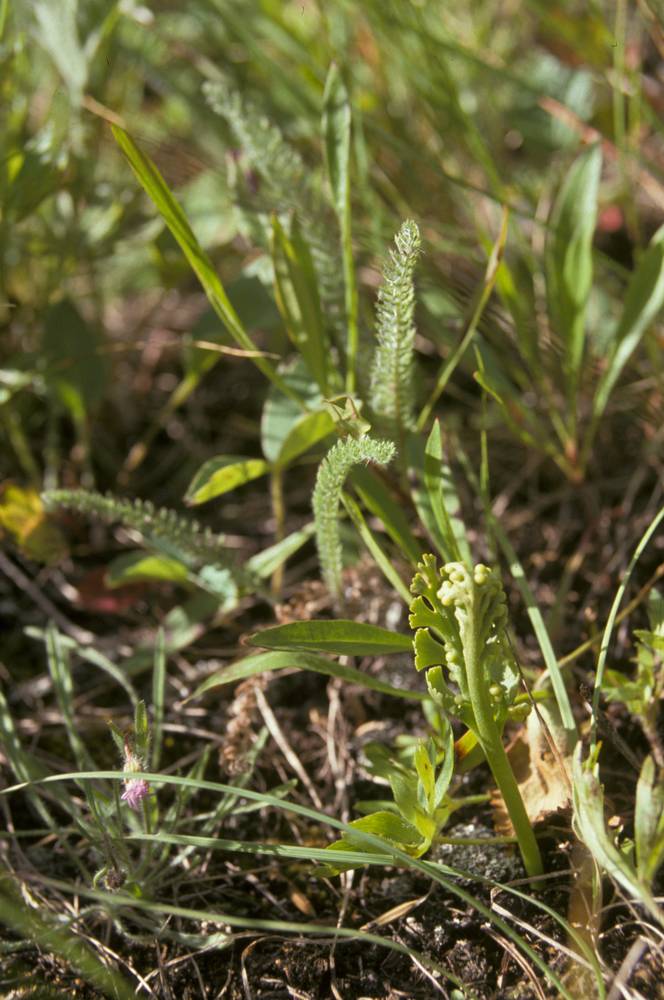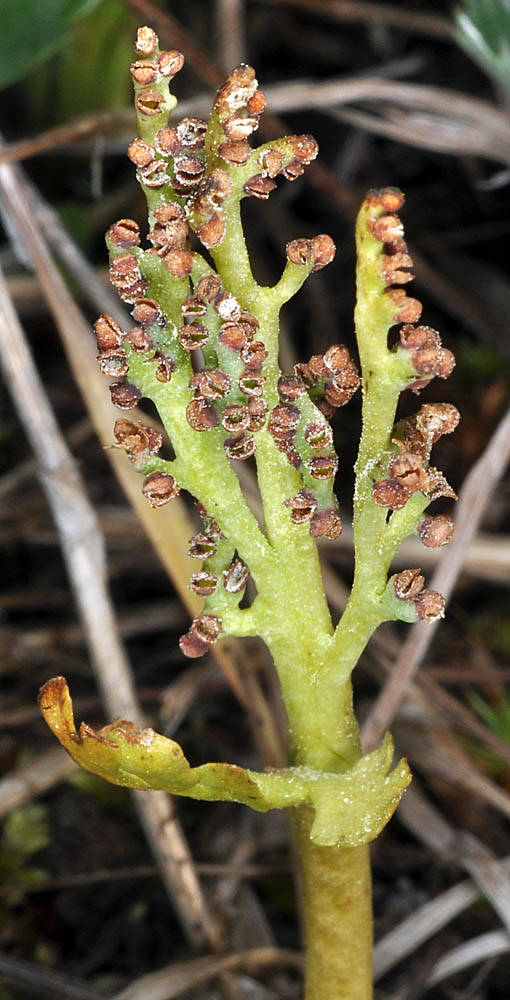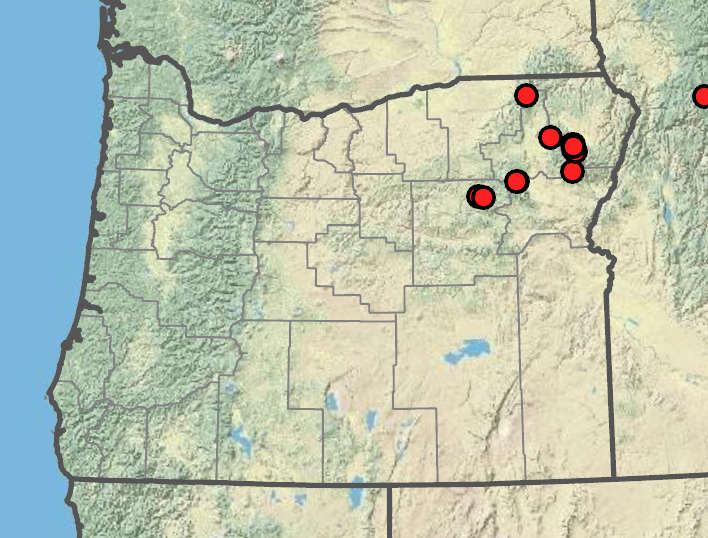Botrychium ascendens
Botrychium pedunculosum
upswept moonwort
stalked moonwort
(40)44–47(54) μm.
36–43 μm.
well developed; greater than 2 cm, green.
well developed; greater than 3 cm, with a prominent reddish brown stripe below trophophore.
sessile or short-stalked; the stalk occasionally to 2 cm long;
blade 1-pinnate, narrowly oblong-triangular; to 6 × 2 cm, yellow-green and shiny in life;
pinnae to 6 pairs, strongly ascending, narrowly fan-shaped, spanning an arc of less than 90°; broadest at the outer margin, usually coarsely toothed and with 2–5 lobes; lower pinnae often bearing marginal sporangia.
stalk 0.8–2.5 cm long; the stalk usually longer than distance between first and second pairs of pinnae;
blade pinnate-pinnatifid; ovate-oblong to deltate-oblong; to 4.5 × 2.5 cm; dull gray-green and glaucous;
pinnae ascending, approximate; the basal pinnae asymmetrically lobed, angular; broadest at or below the middle; upper pinnae becoming spatulate;
pinnae lobes and apices usually acute; the margins slightly rolled;
sporangia usually present on margins of basal pinnae.
stiffly erect;
stalk 0.5–1 times as long as the trophophore at spore release, rarely longer;
branches mostly simple, strongly ascending.
erect with stalk 0.5–1.5 times as long as the trophophore at spore release; in larger plants becoming ternately branched with lateral branches nearly as long as main axis.
=180 (allotetraploid, apparently derived from B. crenulatum and B. lineare).
=180 (allotetraploid, derived from B. lanceolatum and an unknown diploid).
Botrychium ascendens
Botrychium pedunculosum
Open, well-drained areas and historically disturbed sites with a sparse to dense cover of grasses, forbs, and small shrubs or conifer saplings, such as montane or subalpine meadows, avalanche meadows, road shoulders, ski areas, and mining disturbances. 1500–2000 m. BW. CA, ID, NV, WA; scattered in western and northeastern North America. Native.
Botrychium ascendens is easily confused with B. crenulatum, B. lineare, and B. minganense.
Mesic meadows with low, herbaceous or grassy cover, gravelly soil, brushy areas, and in duff under mature Thuja plicata, at upper montane to subalpine elevations. 1200–1800 m. BW. CA, ID, WA; north to AK, northeast to MT, disjunct in Quebec. Native.
Shade-grown plants often lack marginal sporangia on the trophophore. Conversely, occasional individuals of other pinnate- pinnatifid species may possess marginal sporangia.
Ben Legler
Ben Legler
- Local floras:
BC,
CA,
OR,
WA
- Local Web sites:
CalFlora,
CalPhotos,
Flora NW,
PNW Herbaria
WildflowerSearch
iNaturalist (observations)
USDA Plants Database
- LBJ Wildflower Center
- SEINet
- Plants of the World Online
- Encyclopedia of Life
- Wikipedia
- Google Image Search
- Local floras:
BC,
OR,
WA
- Local Web sites:
Flora NW,
PNW Herbaria
WildflowerSearch
iNaturalist (observations)
USDA Plants Database
- LBJ Wildflower Center
- SEINet
- Plants of the World Online
- Encyclopedia of Life
- Wikipedia
- Google Image Search





